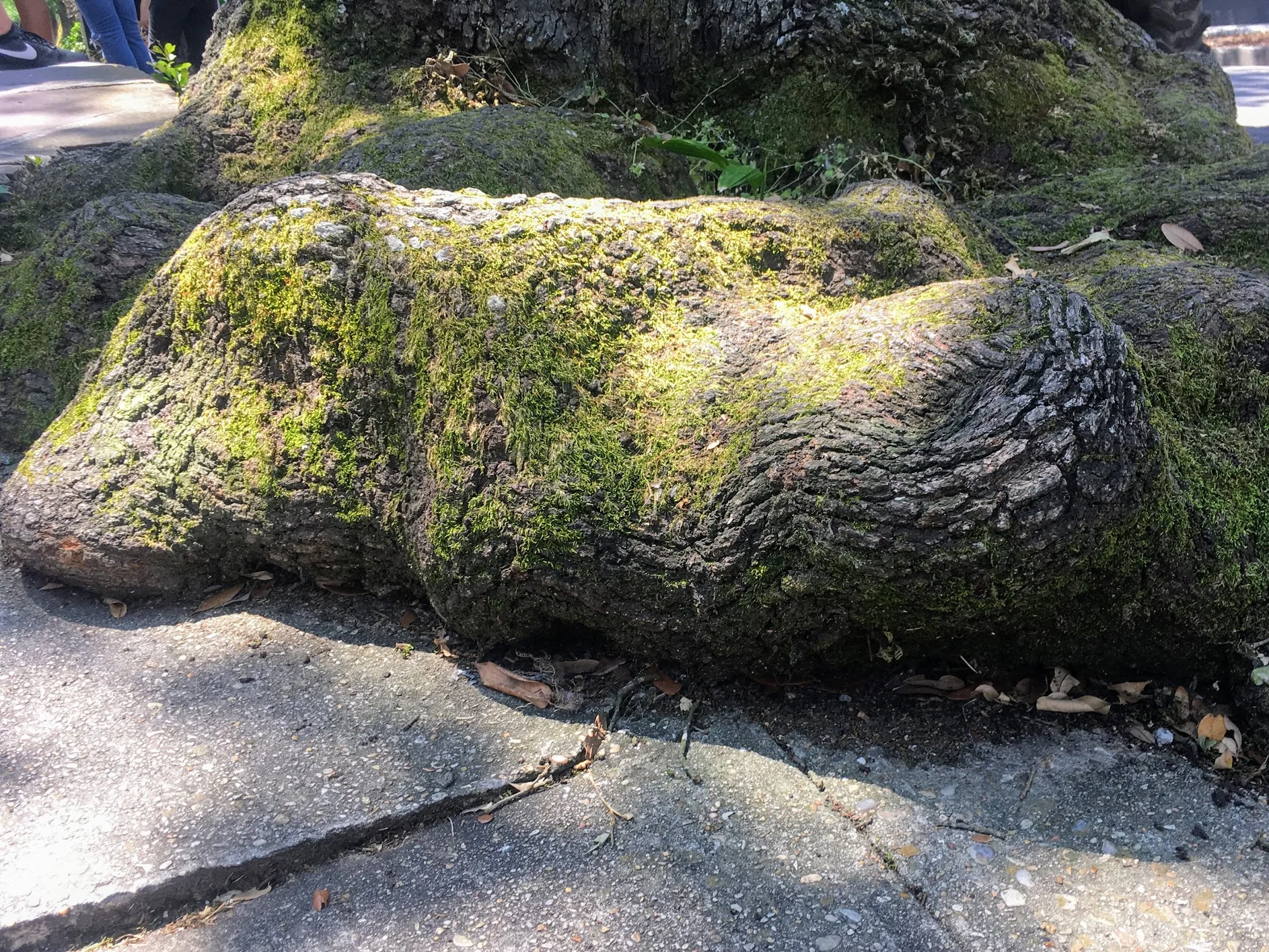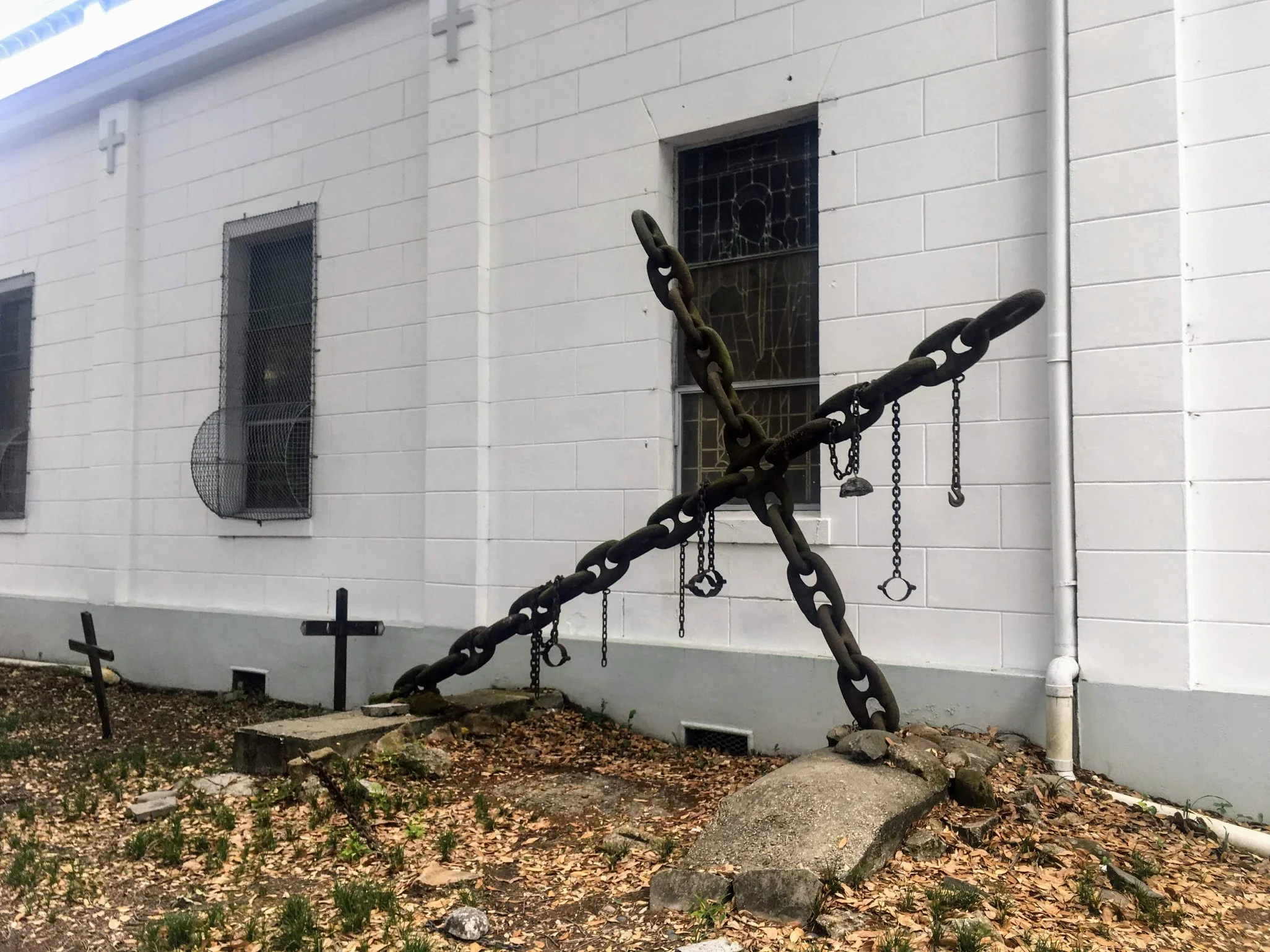When I was on Grand Isle the days seemed to melt into one another because each was much the same. It was eat, read, swim, sleep, repeat. It was a gentle monotony which was a perfect start to the Maymester - a chance to unwind after the stress of finals and the hustle and bustle of LA. But after three days of that cycle, I was ready to get off the island and start exploring the famous city of New Orleans.
We drove from the swamp tour (an excellent survey of alligator jaw strength and racoon cuteness led by Capt. Tom, a very animated Cajun man) directly into the city. As we started getting closer, the swampy cypress trees and hanging spanish moss gave way to stretches of green grass. Eventually they too gave way to grey concrete and skyscrapers towering overhead. In almost no time at all, we had gone from petting alligators, to setting our bags down in the Hotel Lafayette.
The first book that we are reading in the city is Interview with the Vampire a gothic horror vampire novel by Anne Rice. I wondered why on Earth would we be reading such a dark story when in such a vibrant city - surrounded by the colorful Mardi Gras beads hanging from the trees, and the warm soul food wafting through every restaurant patio.
It truly seemed like there was a disconnect between the New Orleans I was seeing on those first few days and the plantation era New Orleans depicted in the beginning of the novel.
This is a city full of memories.
As I continued to read the novel and explore the city, I realized that the novel, and the city, are both filled with juxtaposition. The titular vampire, Louis, wonders if he’s from God or the Devil, if he is good or evil.
“The question pounded in me: Am I damned? If so, why do I feel such pity for [mortal Claudia], for her gaunt face? ... I felt, yes, damned and this is hell, and in that instant I had bent down and driven hard into her soft, small neck.”
The novel is a story that places dark next to light - it’s a story about the undead and yet is filled with death. It tells the dark story of vampires lurking in the shadows, surrounded by a bright and ever changing city.
In the same way, New Orleans itself is filled with juxtaposition. It is a modern city, boasting of the Mercedes-Benz Superdome and a fast paced business district, yet it is at the same time outdated, still deeply entrenched in its slave past.
This is a city full of memories.
While walking through the Garden district and admiring the beautiful, extravagant mansions that originated from white plantation wealth, I tripped on the uneven sidewalk, broken up by massive, overgrown tree roots - the tame and the untame. The “civilized” and the “uncivilized”.
The novel is a reflection of the city itself, boasting of careless fun on Bourbon Street (the height of “laissez le bon temps rouler”) but still deeply rooted in Southern racism which is forever at odds with the idea of the chivalrous gentleman. It’s a city where some people are holding doors open for you, but where others think it is acceptable to shout “konichiwa” at passing dark haired women.
The city reflects the history it is rooted in. Our bookpacking group visited the area where many slave auctions used to beheld - a place where families were torn apart and sold labor in plantations. Just a short five minute walk from these historic sites we passed the Cotton Stock Exchange building - a building where the rich white men in suits could reduce these people to profit or loss figures.
This is a city full of memories.
Everywhere you look, the city is littered with reminders of its slave past.
This is a city full of memories.
Through these juxtapositions, I am reminded of my life at USC. It is a school full of pride during tailgates and football games, but full of disappointment the next weekend when the latest USC scandal breaks. It is a wealthy private institution surrounded by South Los Angeles (formerly known as South Central). Student’s lamborghinis are parked outside the campus Panda Express, as people from the surrounding community go from trash can to trash can collecting bottles.
In reflecting on my experiences reading the book Interview with the Vampire while in the heart of New Orleans, I’ve come in touch with both the beauty and the ugliness of the city. Through its past and present I’ve realized that this is a city full of memories. The way the South remembers its past is paramount to how it can move forward. Only through memories of the past can I truly understand the reality of what present New Orleans has to offer me.
This is a city full of memories.








